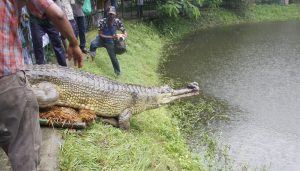Marcy Trent Long: Welcome to Mining the Deep, a podcast series by Sustainable Asia. My name is Marcy Trent Long. In this series…
Preview quotes:
Most deep-sea species, they’ve never been observed alive.
We’ll lose them before we even knew that they were there.
They come into these developing island nations, promise the world…
Never in the history of any extractive industry has there been this much time and forethought put into it.
We shouldn’t be opening up a whole new area of exploitation.
This is a very, very unique resource.
Marcy: Wow. OK, let’s find a good place to start.
Paris Climate Agreement announcement in French
Marcy: Yes, let’s begin there. In December 2015, over 190 countries reached the Paris Climate Agreement. We’d all work together to produce fewer greenhouse gas emissions so our planet would not get more than two degrees warmer than it is now.
So how are we going to do that? Well, one of the ways is by investing in renewable energy. Over a third of the energy we use is from renewables. And while hydropower still takes up half of that share, it’s solar and wind energy technologies that are leading the push these days.
So that’s great, right? Maybe no more exploiting the earth’s resources for fossil fuels, damaging ecosystems with oil spills and open-pit coal mines…
Well… not really. Because these renewable energy technologies, the windmills and the solar panels and the batteries that store the energy, they need to be constructed. And they need a lot of minerals to do that. You know: copper, nickel, aluminium.
The World Bank published a report two years ago that talked about this need for minerals. Wind turbines, for example, come in two models. One works with gears and needs a lot of copper, the other works with magnets and needs a lot of rare earth minerals like neodymium.
And if we look at batteries, you’ve probably heard of lithium-ion batteries. Those are those light-weight batteries that power electric vehicles. And they need a lot of aluminium, cobalt and manganese.
According to the report, by 2050 we’ll need more than twice the amount of minerals we use now to build the needed renewable energy technologies if we want to keep global temperature rise under two degrees.
So where do we get all these minerals?
News reports on mining disasters and human rights issues
Marcy: Right. Mining for minerals is notoriously damaging for the environment and for people. Will our well-meaning green revolution mean more human rights abuse and environmental catastrophe?
There might be another way.
Science Screen Report: The sea, a new reserve of global resources…
Marcy: That’s a clip from Science Screen Report on deep-seabed mining. And that’s exactly what it sounds like. In some areas of the ocean floor, down under kilometres of water, we’ve found minerals. Some are stuck in the rocky sea bottom and some are part of underwater structures called hydrothermal vents. Others come in chunks…
Science Screen Report: …potato-sized objects covering thousands of square miles of sea bottom.
Marcy: In the 60s, we first learned about these minerals on the ocean floor, and several countries sent ships on expeditions to see if there was any money to be made. That Science Screen Report was actually describing one of those missions, with an American ship called the Glomar Explorer.
Science Screen Report: The Glomar Explorer…
Marcy: Yeah. Only, later we found out this whole mission was a CIA cover up. The Glomar Explorer was actually looking for a Soviet submarine that had sunk north of Hawaii. To make sure the Soviets didn’t suspect anything, the CIA had to find an excuse to build the huge ship they needed to retrieve that submarine. So they created a buzz in the press about the wonders of seabed minerals, and enlisted all-American industrialist Howard Hughes as the face of an expedition to find those minerals.
In the end, the mission failed, but the media craze had gotten people so excited about seabed mining that the United Nations decided to look into it further. At around the same time, the UN had started negotiations for something called the Law of the Sea. This convention would spell out the rules for all activities on the high seas. That’s the whole ocean except for coastal areas 200 (nautical) miles from the shore. It includes regulations for things like marine border disputes or fisheries management, but most importantly to us, it established the International Seabed Authority, a new United Nations body that would manage all of the international ocean floor.
For years, the Seabed Authority attracted very little attention. After that initial hype in the 70s, there was actually a long period of calm. No one was really looking at seabed mining, it was just too expensive and too complicated. Plus, there was already so much mining going on on land, why would anyone venture kilometres deep into the ocean for a bunch of manganese?
Well, that question has recently become a lot more interesting.
David Santillo: There is now a lot of increased interest in mining the seabed because of the demand for minerals, because of the technological advances, which seem to be making that feasible.
Marcy: That’s Dr David Santillo.
David: I’m a research scientist with Greenpeace research laboratories.
Marcy: David is one of the many experts we’ll speak to in this series to find out why there’s so much interest in deep-seabed mining now, and whether or not it’s really going to help us achieve those Paris climate goals. We’ll hear more from David later, but first let’s talk about what’s really down there in the deep sea. So I rang up Dr William Brazelton. William is a biology professor at the University of Utah. He’s actually one of the few researchers who has been on expeditions down to the deep seabed.
William Brazelton: I remember in graduate school, a friend asked me if I was concerned about the impacts of deep-sea mining and I just laughed, because I knew how difficult it is to do anything in the deep sea. It’s so expensive and time consuming, and nothing ever goes right when you work in the ocean, and I just couldn’t imagine anyone ever making a profit from doing that.
Marcy: But things developed quickly, and a few years ago William learned some news that shocked him.
William: I heard that the chunk of seafloor that includes the Lost City was sold to mining interests. And my first thought was: “Well this must be some mistake. Why would anybody want to do that? Someone must have got the latitude and longitude mixed up, right? This just doesn’t make any sense at all.”
Marcy: The Lost City is the main focus of William’s studies. But it’s now being explored by mining companies to see what minerals they might be able to dig up. To understand why this news is so upsetting to him, we first have to understand what this Lost City is exactly.
William: The Lost City is a cluster of tall white towers and chimneys that are growing from the top of this huge mountain in the middle of the Atlantic Ocean. And the towers are venting warm water full of organic compounds and nutrients that are food for the thick mats of microbes that grow in the chimneys.
Marcy: I remember seeing these on nature documentaries. They’re called hydrothermal vents, and they’re really interesting for seabed mining because they contain a lot of minerals.
Julia Sigwart: Hydrothermal vents are areas in the deep sea where there’s a magma chamber that’s quite close to the surface of the seafloor. And it creates these small places in the rock, where superheated water jets out through very small holes, and it carries a lot of minerals from the seafloor up through these chimneys.
Marcy: That’s Dr Julia Sigwart.
Julia: I work at Queen’s University, Belfast, where I have a research group. We mostly work on evolutionary biology. So we describe the weird morphology of weird animals that live in the oceans and try to understand how they evolved and what their ancestors looked like.
Marcy: Julia also studies these hydrothermal vents.
Julia: When the mineral comes out into the water, it creates a cloud of precipitate – of little particles in the water – that looks like smoke. So we call them black smokers.
Marcy: That cloud of particles is full of minerals, and when the cloud settles and cools down, it creates chimneys. Perfect for mining.
William: We have found these hydrothermal vents on the seafloor all over the world.
Julia: There are vents in the Atlantic, there are vents in Antarctica, there are vents in the Eastern Pacific… Each of those places and others, they have their own communities with their own species that are only endemic to these small areas.
Marcy: So these hydrothermal vents are not just interesting for minerals you can find there, but also for the life that survives in these extreme conditions.
William: So some of the animals that have been discovered in hydrothermal vents include these huge tube worms that can be up to six feet (1.8 metres) tall. They’re bright red because they have blood that is full of haemoglobin. And in the same way that our haemoglobin carries oxygen, theirs also carries oxygen. But it also carries hydrogen sulphide, because the hydrogen sulphide is the fuel for the microbes that live inside the tube worms’ guts, and the microbes turn the hydrogen sulphide into energy that they use to make food, and then that food is the sole food source for the worm itself. So this gigantic bright red worm is fuelled entirely by microbes in its gut. That’s one of my favourite examples.
Marcy: And Julia’s favourite is the scaly-foot snail.
Julia: The animals are about six centimetres long, five or six centimetres long. And their foot, their soft, slimy foot in a normal snail, is covered with these hard, fingernail-like scales that are overlapping like tiny little roof tiles all over the foot. So the animal basically has its own chainmail, it has its own armour plating all over its body. So they’re the only snails, land or sea, that have this feature in such a dramatic way. So they were a big sensation when they were first discovered.
So the scaly-foot snail lives on a few hydrothermal vents in the Indian Ocean. It doesn’t live anywhere else in the world. That’s not because we haven’t found it, it’s because it doesn’t live anywhere else. It only lives in hydrothermal vents in the Indian Ocean.
Break to thank sponsors
Marcy: So these hydrothermal vent systems around the world all have these very unique species. Some vents in the Indian Ocean are the habitat for a rare creature like the scaly-foot snail, whereas other vent systems like the Lost City in the Atlantic have a different secret to reveal. Here, it’s not the earth’s magma heating up the water, it’s actually a chemical reaction between a certain type of rock and the ocean water. When these two touch, the rock blows up and creates these crazy structures. The whole process is called…
William: Serpentinization.
Marcy: And what’s so cool about this chemical process is that it may be the source of life.
William: The fact that life is living there is obvious as soon as you put a camera on it, because you can see these thick, snotty biofilms just growing everywhere. They’re really happy there, they’re thriving. But that whole microbial ecosystem is probably dependent on just a few species that are able to metabolise those products of serpentinization and then make those molecules available for the rest of the ecosystem.
Marcy: Hold on. So microbes eat the carbon molecules that are released in the water during serpentinization, and then animals eat the microbes and so a whole ecosystem is sustained?
William: One of the exciting things about the discovery of the Lost City is the potential that that whole ecosystem could be totally self-sufficient and isolated from the rest of the planet, such that you could imagine a self-contained ecosystem living on a moon of Jupiter underneath a thick ice shell that is fully fuelled by the serpentinization reaction.
We can see from the Cassini mission to Saturn that Enceladus, one of the moons of Saturn, has a huge plume of water jutting out of it that is almost certainly caused by very similar processes that are causing the water to vent out of the Lost City chimneys. So Enceladus, this moon of Saturn, might be like a giant version of the Lost City orbiting around Saturn.
Marcy: This could tell us so much about the origins of life on our planet. We know life probably started in our oceans, and now we found these vents where tiny life forms are munching on carbon molecules released from chemical reactions. And this… this is what we’re about to bulldoze for some minerals?
Julia: I think in the general public, people who watch nature documentaries and have some basic familiarity with what hydrothermal vents are and how spectacular and important they are, most people would just assume that they’re protected, that they’re under the purview of the UN and so therefore they are protected and we don’t have to worry about them. But in the Indian Ocean currently, all known active hydrothermal vent fields in the high seas are within an exploration licence for someone.
Marcy: The high seas, so it’s the International Seabed Authority that’s been handing out these exploration licences. That’s the United Nations! How did they decide to give a mining licence for the hydrothermal vents with the scaly-foot snail and the tube worm and the microbes of the Lost City that might be the origins of life?
Julia: What’s actually happened is that the International Seabed Authority took all of the areas that were of potential interest for mineral extraction, and many years ago, about 15 years ago, had a fairly open call that companies or governments could stake a claim and basically pick which areas they wanted to have an exploration licence for.
Marcy: So this UN body has granted exploration licences to mining companies to prospect the deep seabed, including all these unique rock formations and habitats for rare animals.
William: It became clear that something is just wrong with this process, right? It just makes no sense for that to happen. And the decision-making process that we’re using to decide which parts of the seafloor to explore for mining is fundamentally flawed in some way, and that clearly… It just seems like these folks don’t know what they’re doing, if that’s the direction they’re going in.
Marcy: Julia and William each decided in their own way to sound the alarm bells about what was happening. Julia teamed up with her research partner, deep-sea biologist Dr Chong Chen, working with the Japan Agency for Marine-Earth Science and Technology.
Chong Chen: It’s so difficult and expensive to go to these environments. We basically find new species every time we visit environments, even those that we have been visiting for more than 10 years in a row. So we really don’t even know what lives in these environments. And without that information, how can you start to make decisions about what ecosystem is vulnerable?
Marcy: A few years ago, Julia and Chong went on an expedition to study the scaly-foot snail. But… they couldn’t find it.
For several weeks. No trace. And suddenly they realised…
Julia: We were the people who knew more about this species than anyone else. And we were the only people, maybe four of us on that ship, who actually understood how vulnerable they were.
Chong Chen: Sometimes, maybe within a few years, they go from very abundant to very low density, and then back again. And if they’re hit by mining activity when they’re in the low density, they’re almost certainly doomed.
Julia: But these are prime areas where there are already deep-sea mining exploration licences granted to several countries, including China. And we were concerned that, as the regulations around this deep-sea mining industry develops, nobody was taking into consideration the vulnerability of these species.
Marcy: They had to do something. People had to be aware that there was life in the deep sea, living in these special habitats that were now being explored by deep-sea mining companies.
Chong Chen: But how we communicate that with people, especially stakeholders and politicians and companies, is quite difficult, because if you give them a lot of biology papers, they wouldn’t read them.
Marcy: So Julia and Chong thought of a way to bring the vulnerability of the scaly-foot snail to everybody’s attention. There’s one tool conservationists have to raise awareness about endangered species called the Red List. This is a list kept by the International Union for the Conservation of Nature, or IUCN, the oldest global conservation organisation. Every species that they consider gets a score ranging from “Least Concern” to “Extinct”. In a recent editorial, the prestigious journal Nature called the Red List “an irreplaceable indicator of global environmental health”.
So the first step to make people aware of this unique creature was to get it on that list. But Julia and Chong soon found out that was easier said than done.
Julia: To the perspective of a marine biologist, it really sounds like something that’s only meant for pandas and zebras and animals that are really well known. The problem with deep-sea species is that we often don’t know very much about where they live, how many are there? What does its larva look like? How does it make babies? How far can they spread? We just don’t know these things. Because for most deep-sea species, they’ve never been observed alive.
Marcy: But Julia and Chong were determined. So they got help from people at the IUCN, and were able to make the Red List criteria work for their enigmatic snail.
Julia: And so applying criteria based on where the animal lives, the extent of occurrence, the area of occurrence. So what populations are known and how widespread are these populations? And the fact that there is this imminent threat of potential deep-sea mining that would cause a dramatic change, a dramatic decline, in this habitat. Applying all of those criteria with the standard IUCN assessment algorithm means that the species qualifies as an endangered species on the global Red List.
Marcy: A minor victory for Julia and Chong. Their beloved scaly-foot snail made global headlines as the first species threatened by extinction from deep-seabed mining activities. It serves as a small but meaningful warning to the world that there are animals out there who will suffer if we go ahead with large-scale seabed mining.
Julia: We’re really happy to have more and more scaly-foot fans around the world. It was really gratifying that we had some media attention around the Red List status, that was really exciting, really joyful. It’s really strange to be joyful about a species being endangered. But of course, it’s always been endangered. We just got it recognised as being endangered. We’re just so happy to see so much love for the scaly-foot.
Marcy: Meanwhile, William Brazelton joined an effort by geologists and biologists from all parts of the world, and they signed a letter to the Seabed Authority urging the agency to think twice about prospecting areas of the ocean floor that we really haven’t properly studied yet.
William: They’re exploring places of the seafloor to mine that we literally don’t know what’s there, and there’s no way we can know if there’s anything to protect if nobody’s ever been there before. And so that’s my big worry with all of this, that we’ll just get so far down the road that there won’t be any time to think about whether we’re about to lose species of animals or beautiful seafloor formations that we’ll lose before we ever knew that they were there.
Marcy: But unfortunately…
William: There, as far as I know, has been no response, and no sign that anyone reads or understands the letters either.
Marcy: While scientists are still voicing concerns about deep-seabed mining, many countries have gone ahead with projects in local waters. Remember how the UN decided that each country’s borders extend to about 200 [nautical] miles out from the shore? Well, if you’re lucky, you might have some minerals on the seafloor within those boundaries, and then you’re free to do with them whatever you want. Japan is one of those countries. They tried deep-seabed mining in 2017 just off the coast of the southern Okinawa islands. But for the most controversial project to date, we have to go further south, to Papua New Guinea.
Matthew Gianni: The most interesting example at the moment is that of Papua New Guinea where a mining company called Nautilus secured licences to mine concessions, to mine within Papua New Guinea’s waters, and actually convinced the government of Papua New Guinea to buy into the mining operations.
Marcy: You just heard Matthew Gianni, co-founder of the Deep Sea Conservation Coalition. In the next episode, Matthew will help us tell the story of the first major seabed mining operation, started way back in 2008, and what we’ve learned from that experience.
Mining the Deep is hosted by me, Marcy Trent Long, and produced by Sam Colombie in collaboration with China Dialogue. The series is mixed by Chris Wood.
Thanks to all our guests for helping us unravel this complicated issue, to Miguel Urmeneta for his voice-over and Alexander Mauboussin for his intro music, made from repurposed and recovered waste items. Additional thanks to the podcast After the Fact by Pew Charitable Trusts for providing audio from a speech by Michael Lodge. Thank you to the entire Sustainable Asia team, Bonnie and Heidi Au, Josie Chan, Crystal Wu and Jill Baxter.
Production credits:
Executive producer and host: Marcy Trent Long
Producer: Samuel Colombie
Sound engineer: Chris Wood
Intro/outro music: Alex Mauboussin
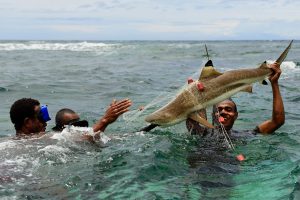
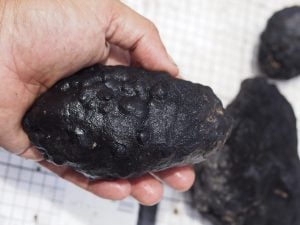

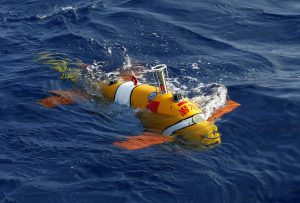
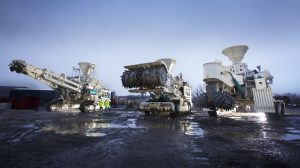

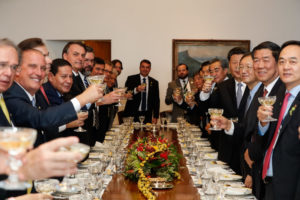
![Qinza Najam's installation "Don't Grow Up, It's a Trap" at the Karachi Zoo [image by: Umme Hani Imani]](https://dialogue.earth/content/uploads/2019/11/Dont-Grow-up-Karachi-300x169.jpg)
